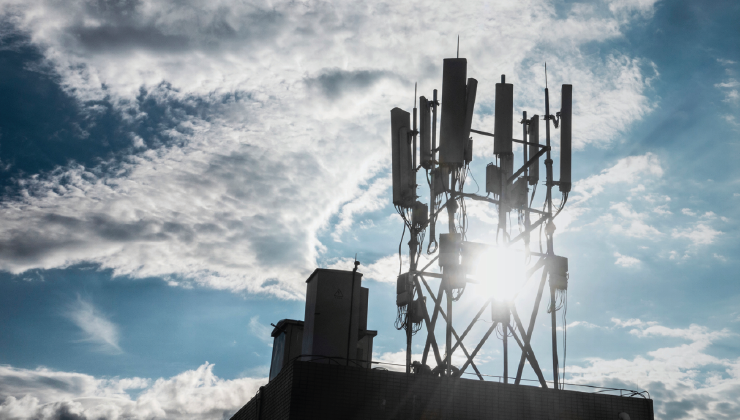

Quick definition: GSM stands for Global System for Mobile Communications. It’s a standard that specifies how 2G (second generation) cellular networks operate. GSM was a significant improvement over the first generation of cellular networks and represented a transition from analog to digital telecommunications.
GSM is currently the most widely used network technology in Internet of Things (IoT) applications for its simplicity, affordability, and accessibility. But that’s likely to change over the next few years.
When the Global System for Mobile Communications was first introduced in Europe in 1991, these 2G networks created faster, more secure wireless connections. For the first time, voice communications became encoded into digital signals before being transmitted through the network.
GSM reigned for years as the world’s most widely used standard for mobile communications. But today, 2G networks are significantly slower than other cellular networks, and in several countries 2G networks are being switched off.
Mobile Network Operators (MNOs) are competing to balance the fastest speeds with the best coverage. With decades of built up infrastructure, GSM-based networks can offer good coverage, but they can’t compete with the speed, versatility, and security of 3G, 4G, and 5G networks.
Additionally, GSM standards were designed with cell phones in mind—not the Internet of Things (IoT). Today, billions of other devices like parking meters, industrial equipment, car entertainment systems, and security systems rely on cellular networks and use them in different ways than phones do. As a result, specialized networks have emerged to address the modern landscape of cellular connectivity.
So, are GSM standards still important for cellular connectivity today? Are they relevant to IoT applications? Before we get into that, let’s look at how GSM networks work.
Structure of GSM networks
GSM standards divide networks into four distinct parts:
- Mobile Station
- Base Station Subsystem (BSS)
- Network and Switching Subsystem (NSS)
- Operations Support System (OSS)
Each part of the network contains several components. Together these components form one complete cellular network. Every cellular provider has their own infrastructure with all of these pieces.
Mobile Station
The Mobile Station is essentially the access point someone uses to connect to the network. It’s a device (such as an alarm system) with a Subscriber Identity Module (SIM). The SIM associates the device with an individual subscriber, which allows the device to connect to the nearest Base Station Subsystem.
Base Station Subsystem (BSS)
The BSS contains Base Transceiver Stations and a Base Station Controller. The Base Transceiver Stations include components like receivers and antenna, which allows connected devices to send and receive signals, and the Base Station Controller allows the Base Transceiver Stations to relay signals through the network, via the Network and Switching Subsystem.
Network and Switching Subsystem (NSS)
The Network and Switching Subsystem is a term for the major components of a 2G core network. The NSS originally helped facilitate connection-oriented voice calls with the Home Location Register (HLR), Authentication Center (AuC), Message Service Center (MSC), and Visitor Location Register (VLR).
With the introduction of the GPRS core network and its support nodes (GGSN and SGSN), the NSS began playing a role in data connections as well.
Operations Support System (OSS)
The Operations Support System is a conglomeration of processes, data, applications, and tech that allows providers to manage their network. Carriers can use their OSS to:
- Configure network elements
- Manage and configure the services they offer
- Handling system errors and managing the system’s state
- Monitor performance based on quality of service and quality of experience KPIs
More advanced cellular networks have similar structures, but with additional components to improve the networks’ security and capabilities.
Is GSM still useful?
GSM networks are now three decades old, and there are three generations of cellular networks with far higher data transfer rates, more secure connections, and advanced networking capabilities. Over the years, telecommunications organizations have implemented upgrades to get more mileage out of GSM-based networks, but in several countries 2G is coming to an end.
This doesn’t have much impact on consumers, as phones usually support multiple technologies. But GSM has been one of the most popular connectivity choices in cellular IoT. Modern IoT manufacturers need to evaluate whether 2G connectivity is still a viable option for their application in the region where they want to deploy.
Reusing the 2G spectrum
While many parts of the world still use 2G networks, cellular carriers began sunsetting their 2G networks as early as 2016. This is because the radio frequency (RF) spectrum is a finite resource, and 2G networks are using parts of the spectrum that could be better used by more advanced technologies.
Think of the RF spectrum like a theater with limited seating. Since 1991, the world has reserved specific seats (the 850/900 MHz and 1800/1900 MHz frequency bands) for 2G connections based on the GSM standard. Now, cellular providers are changing the reservations so that their 3G, 4G, and 5G networks can occupy these seats.
Using 2G as a backup
However, some carriers still use 2G connectivity as a fallback in areas where their more advanced networks don’t have coverage. Other countries who are not as far with deploying newer standards may still use 2G as the main connectivity option. So it can still be useful to design a device that can connect to GSM networks.
Choose the right connectivity for your application
GSM played a foundational role in modern cellular communications. And while some operators are transitioning to newer networks, this technology is still immensely popular for its global availability and extremely low-cost connectivity. As operators expand their infrastructure for affordable alternatives like LTE-M and NB-IoT, 2G will become less relevant. But until then, it’s still an attractive solution for many cellular IoT applications.
Need help connecting your devices? emnify is an IoT communication platform. We specialize in helping manufacturers create truly global applications. With our technology and infrastructure, your applications can connect to more than 540 networks in over 180 countries.
Get in touch with our IoT experts
Discover how emnify can help you grow your business and talk to one of our IoT consultants today!
Tobias Weber
More than six years of experience as a senior editor in the realm of smart home, connectivity and Internet of Things. And still as curious as on the first day.



